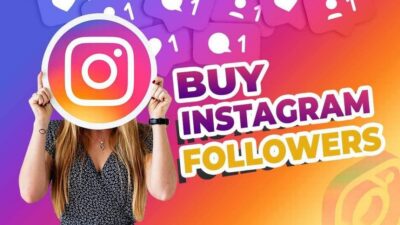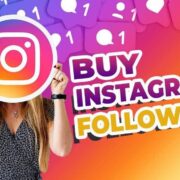
The term “brand story” may seem like the marketing buzz phrase of the day, but in actual fact, great brands have been telling stories for a very long time.
Take one of the world’s most iconic brands, Coca-Cola, for example. Its logo has barely changed over its 130-year history. The brand’s heritage, its story of being the original cola, has always been part of its marketing strategy.
It is true to say, however, that brand stories have moved to the forefront of marketing campaigns in recent times. Why is this so?
The importance of brand storytelling is largely due to its social media impact. Social media has encouraged conversations between brands and consumers that weren’t possible with traditional advertising. It has underlined the importance of brand identity.
Brands can, and need, to have much greater interaction with their customers.
Stories make this possible.
What is a brand story?
In simple terms, your brand story is the tale of how your brand began or where it’s going, framed in a way that connects with your target audience. It should aim to give a clear window into the company’s culture and explain its values, its vision and its mission.
Why tell your story?
Storytelling encourages interaction; humans have always told stories to foster connections with another. Indeed, having stories in common are what bind friendships, families, whole cultures together.
Brands can, through compelling storytelling, create a real connection between a brand and its audience. Stories can engage, enrich and inspire.
Stories can evoke a very emotional response: feelings of joy, comfort, reassurance, excitement and many more can all be kindled by a great brand story. Indeed, storytelling is a very powerful medium to utilize.
A good story that resonates has the ability to completely transform mindsets.
The Art of Storytelling
Very few people would argue that they are born story-tellers. Although it is said that there’s a book waiting to be read in each person’s life, very few have the self-belief to try. Perhaps, though, creating a plot isn’t as difficult as one might assume.
Author Christopher Brooker made a compelling case that there are really only seven different stories in his landmark 2004 work, “The Seven Basic Plots.” He argues that all popular narratives, from those created by Shakespeare to EL James, have one of seven recognizable shapes.
Not all the basic plot types are ideal for marketing purposes; needless to say that ‘tragedy’ is not ideal.
However, here are all the other six story types and how they’ve been used successfully by brands. In looking at these plots, you may note that a brand’s identity, or its past, present and future, fits in any one of these narrative styles.
The Quest
These are classic stories of heroes on a mission. They must overcome obstacles on their way to ultimately make the world a better place. You may recognize this plot shape from “The Iliad and The Odyssey” to the “The Lord of the Rings.”
The use of Flo, the popular character from Progressive Insurance’s long-running campaign, is an example of how this kind of story can really hit home with consumers. Flo’s ceaseless quest to provide customers with the safety and security of value-for-money insurance has been hugely popular with consumers.
Overcoming the Monster
This is the classic good conquering evil story illustrated in “Beowulf” right through to “Godzilla.” It’s the story of one man taking on the might of something horrific for the greater good of mankind. It’s the tale of the underdog, just like in the story of David versus Goliath.
This plot shape makes for an inspiring story that can really influence brand loyalty. Think of Dove’s “Real Beauty” campaign, which took on the might of the fashion and cosmetics industries and their perpetuation of unrealistic beauty standards; “No wonder our perception of beauty is distorted,” it claimed, to much admiration.
Rags to Riches
This is the classic Cinderella or Rocky story. Against all odds, the inherent goodness of a character means they eventually turn nothing into everything.
Gatorade used the classic rags to riches story in their inspiring 2017 campaign, ‘The Secret to Victory.” A series of world-famous athletes explain how they triumphed over adversity with the tagline, “Make defeat your fuel.”
Voyage and Return
In these stories, the protagonist makes a journey and comes back all the wiser. This plot is a common element in many classics such as “Alice in Wonderland” and “Gone With the Wind.”
Chipotle had an overwhelming reaction to their “Back to the Start” campaign, where a farmer journeys through an imagined future before coming back to the present and changing his course. The ad finishes with the line, “Cultivate a better future.” It has a strong ethical message at its core that resonates with viewers.
Rebirth
The rebirth story is one of an event that forces a character to change for the better. Think of Scrooge from “A Christmas Carol” as a classic example.
In marketing campaigns, there are many successes when stories or rebirth or regeneration are told. Nike’s “Just Do It” campaign is a great example. One of its most memorable early ads featured inspirational Walt Stack, who ran 17 miles a day at 80 years of age.
Comedy
While a comedy story must, of course, contain humor, it is more complex than that. Typically, it shows a situation becoming ever more complicated, silly and confusing but is, at last, made clear with a simple, happy ending. Shakespeare was a master of comedy, but this basic plot structure is still used today in movies and TV sitcoms.
Comedic marketing campaigns are notoriously difficult to do, but when well-executed have the potential to reach cult status.
For example, Budweiser’s campaign at the turn of the century is forever remembered for its ‘Whassup!” catchphrase. Or, more recently, Old Spice’s “The Man Your Man Could Smell Like” campaign went viral, helping the brand overcome declining sales at the time.
How to choose the right story type for your brand
Today’s consumers are becoming more and more morally conscious in their choices. They want to go with a brand that shares their values. This is why it’s so important to tell the story of where your brand came from or where it’s going.
The story of how your brand has evolved over time may well fit well into the “Voyage and Return,” “Overcoming the Monster” or “Rags to Riches” categories.
Sometimes a startup brand has such a great story behind its conception that it already fits perfectly into any one of the six plot categories. This is often the case when brands are created with a strong stance from the very start, such as eco brands whose story usually fits neatly into a quest type of plot.
Creative branding agencies will tell you that when your brand history doesn’t have such a strong storyline, you need to look at your core brand identity and its values. Working these into a story of where your brand is going can work just as well. “Quest” and “Rebirth” types of stories usually hit the right note with customers.
It’s worth noting, however, that brands that take risks and do things a little differently often have the most memorable campaigns.
Take Dove’s “Real Beauty” campaign as an example again. Up until then, the beauty industry had tended to tell stories of the quest for perfection or Cinderella-style rags to riches stories. It is precisely because Dove broke the mold that their campaign was so successful.
AUTHOR BIO:- Grace Yacoub is the owner, founder and CEO at Zaman. She recognized the potential to develop brands in Dubai back in 1996. Amongst her first projects were to convert the local powerhouses of Etisalat and NBD into branded entities and engage the nation in the drive for modernity. She has since led projects across finance, family, industry, property, retail and all sectors to convert many of the region’s most important companies into powerful brands.














